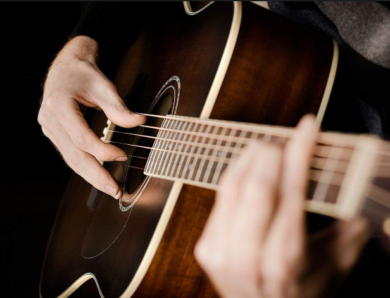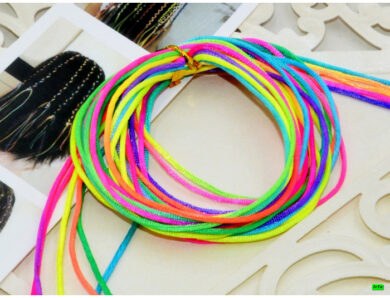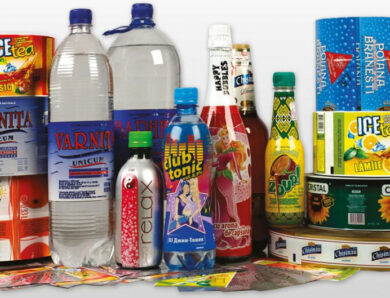Socket and wrenches: which lead to overheating of the gasoline or diesel engine, operating conditions, Photo
A wrench is a frequently used tool in a garage. Many wrenches are available for easy tightening of bolts and nuts, not taking into account highly specialized. The main species stand out from this diversity, which are listed in full below:
- Cap.
- Carob.
- Combined (on the one hand cap, on the other - carob).
- Adjustable.
- End.
horn keys
When talking about a wrench, then first of all mention carob. The nut is fixed with sponges, resembling horns, hence the name. But according to GOST it is called - a wrench with an open throat. The longitudinal axis of the handle is at an angle to 15 ° to the axis of the head. It is specially designed, to work freely in a confined space. There are keys, in which the angle between the head and the handle 70 °. In combined versions, at one end of the corner 15 °, and on the other 70 °.
Often carob have two heads, at the ends of the handle, under different sizes of nuts. This significantly reduces the number of required tools in the kit. Locusts have become widespread due to their versatility, easy to use and this despite the disadvantages. The main of which is a small contact zone and the corners of the nut are crushed under strong pressure, and if the tool is larger than the required size, this is often the case. When using the right size, the force of influence will be greater. The thinner the sponge on the key, the higher the probability of damaging the corners.
The impact wrench is used when unscrewing rusty bolts and nuts, at the other end it has a thickening, where blows are struck with a sledgehammer or hammer.
Manufacturers often release the keys to their lip profile. IBEX tools have one shortened horn, with a short protrusion, and on the other a convex notch of altered shape. This modification has two obvious advantages:
- Speed - easily removed and rearranged, simple diversion.
- Contact spots are located at a greater distance from the corners of the nut, which reduces the chance of blurring the boundaries.
In simpler modifications, corrugation or convexity is applied to the work surface. It helps to work with bolts and nuts, with crumpled faces.
socket wrenches
Spanner key (annular), more advanced type of carob. It was made to solve the main drawback - the minimum contact spot. The head rests on the entire area of the nut and the load is evenly distributed over the entire surface. On all six faces, instead of two. And the fact that the contact spot is far from the corners, almost eliminates their wrinkling in the process. The size of the cap head, less than carob and they are much more comfortable to work.
The profile of the cap key comes with 12 faces (the most popular option) or with 6 (TORX). Advantages of the twelve-sided tool in convenience of work, enough to turn 30 °, when TORX needs twice as much. But another, due to the design of the faces, larger collision area, this allows you to apply more force, not afraid to lubricate the corners.
The ring on the tool can be flush with the handle, and at an angle 15 ° (with the head bent). A certain position of the ring is suitable for different conditions (sometimes the only true one). Flat keys are almost never used. The most common type - with a bent head. Tool with ratchet mechanism, often equipped with a hinged head.
Caps, as well as hinged are equipped with two rings of different sizes. Shock modifications are also available, as in the combined. For cases, in which it is impossible to place the tool from above, use a variation with an open ring. This is often the case when servicing pneumatic and hydraulic systems.
For convenience of work in hard-to-reach places, on some models, the handles have a curved shape, the motor key is made in the shape of a crescent.
combined keys
Tools combine, on the one hand carob, and on the other - a cap. Deprived of the shortcomings of both, retaining benefits. This option is the most common and in demand. Combining cap and horn tools, companies are not limited. You can often find other options, example, with end. But when it comes to combo keys, without specifying which one, then it is horn-cap.
In modifications with the head turned on 90 °, the palm focuses on a large area of the head, and not a small one.
adjustable wrenches
The adjustable wrench is an ordinary horn key, in which you can change the interval between the sponges. Most often used in everyday life, and not in professional activities. Masters avoid them because of such shortcomings:
- Large head size, complicates work in hard-to-reach places.
- Backlash of horns does not allow to fix a nut densely, which at small efforts leads to smoothing of corners and failure, and this can result in injury.
- It is impossible to create significant torque due to low strength.
- Sponges must be constantly adjusted during operation.
This tool has only one advantage - the ability to stretch the sponges to the desired size. This tool is easily replaced by the end, with replaceable heads.
socket wrenches
At the end of the tool is a recess, in the shape of a hexagon, under a nut or a bolt. Widely used in car repair. Often, socket wrenches are made in L-shape, with a notch on both sides, under the same size, and not as in the combined. This is due to the different purposes, the long part of the tool will easily get into an inconvenient place, this will be shorter lever and less effort, and when covered by the short end, the torque will be great.
When unscrewing the bolt with a socket wrench, you need to make more effort than twisting, due to fermentation of the thread. The shorter part of the end, used as a lever when twisting, and long when unscrewing. This helps to cope with the situation, when it is impossible to unscrew the nut or bolt.
On some models of an end key in a bend the opening for protruding parts is provided. The end tool can be equipped with a twelve-sided recess, with all the accompanying pros and cons compared to TORX. Models with the combined six - dodecahedral end faces are issued, in one tool. When the end heads are attached through a hinge, then they come in different sizes.
Examples of socket wrenches:
- Socket L-shaped key KING TONY 1080-11 - is used for installation of various knots, units, devices, products, in different techniques. Used in automatic, service stations and production. The geometry of the tool allows you to easily work in a confined space. The profile is convenient for use together with hairpins and fastening, located in the recess. The socket wrench is made of chrome - vanadium steel with subsequent heat treatment, which provides high reliability and durability.
- Socket L-shaped key SKRABAR 27x27. Tool weight - 950 grams, head size - 27 mm. The end tool is melted from stainless steel. Good for car repair, to work in a confined space.
Models of T-shaped socket wrenches are available, in the form of a cross, with replaceable heads. There are tools with 8 heads, but it has one drawback - large size. End tools are widely used in car repair as professionals, and amateurs.
tubular wrenches
The design of the tubular wrench is a pipe, at the ends of which are hexagons, and holes are made in the case, for rod. The sizes of hexagons differ. Very often such keys come with the car.
There are models of L-shaped tubular wrench. Such tools have the same hexagons at the ends.
Candle wrench - another type of tubular, the hexagon is located on one side only. Used to replace car spark plugs.
Ratchet wrench
Some models are face and combined, equipped with a ratchet mechanism (rattle). Adding an advantage - the ability to roll the tool. And a small corner, required for return, greatly facilitates screwing and unscrewing nuts. The design of the rattle differs in the number and size of teeth. To turn the tool in 72 tooth, enough 5 °, 40 teeth - 9 °. This helps a lot in limited working conditions.
One of its disadvantages is the rattle, often breaks from overload. Such a tool is much more expensive.
Others
Bicycle
An integral part of any bicycle repair kit, along with a spokes wrench. It has not changed much since its inception.
Colic
He has the other end made in the form of a rod, sharpen to the end. This design helps to combine different parts, before the bolt.
Nut
When the nut is stuck and does not move, then to remove it use a special tool - a nut. It is put on a nut, and on the other hand, the wedge is twisted, until it cracks. A special tool with a hinge is provided for round nuts.
torque tool
To control the force with which the bolt or nut is tightened, use this tool. It can signal when the desired value is reached or display torque.
tubular
No plumber can do without a pipe wrench. Its design provides adjustable lower jaws with notches, for reliable fastening. In order not to spoil the appearance of details, it is wrapped with a pad of wet leather. There are also models with plastic pads and no notches.
chain
Used when capturing large parts (oil filters, pipes).
Wrenches and socket wrenches




